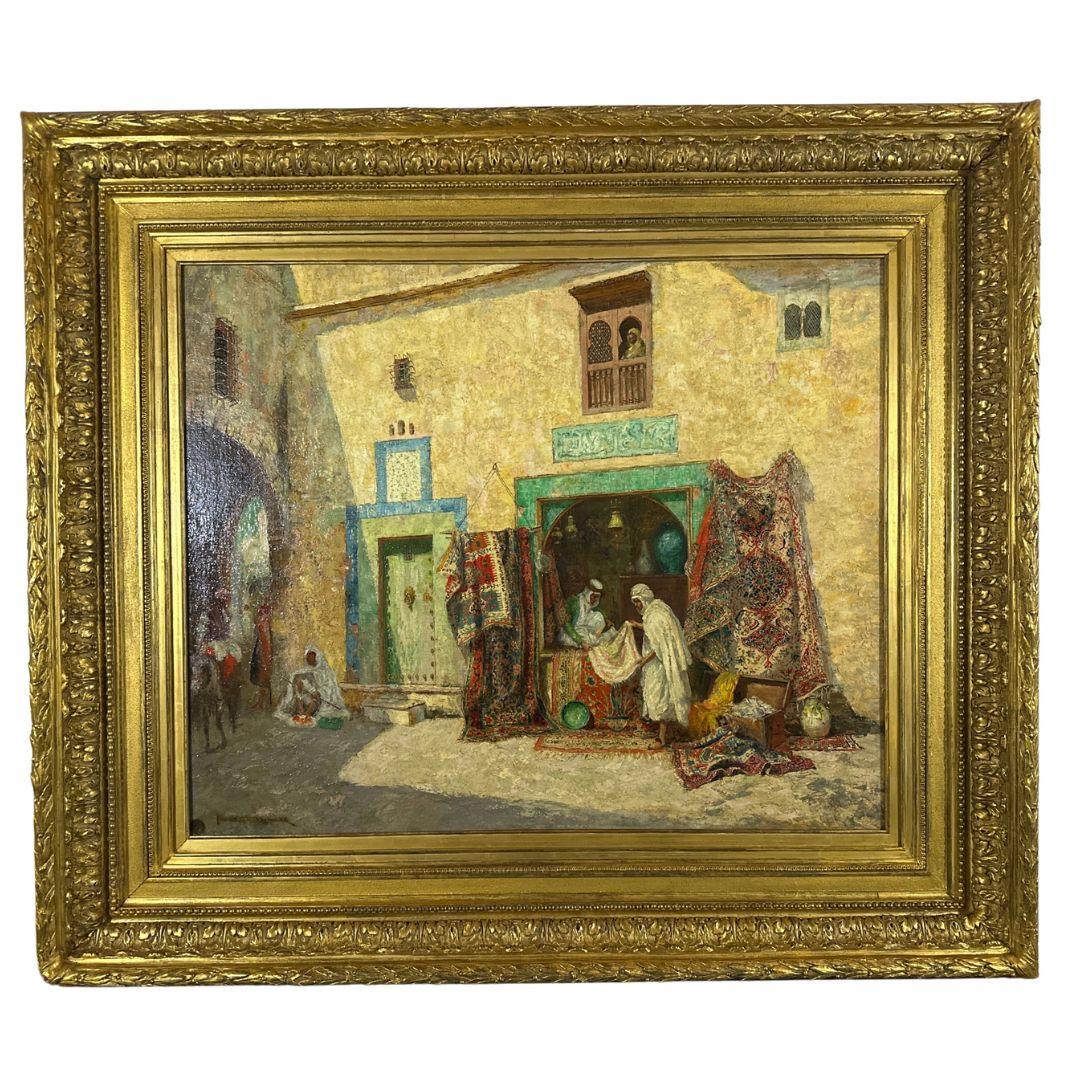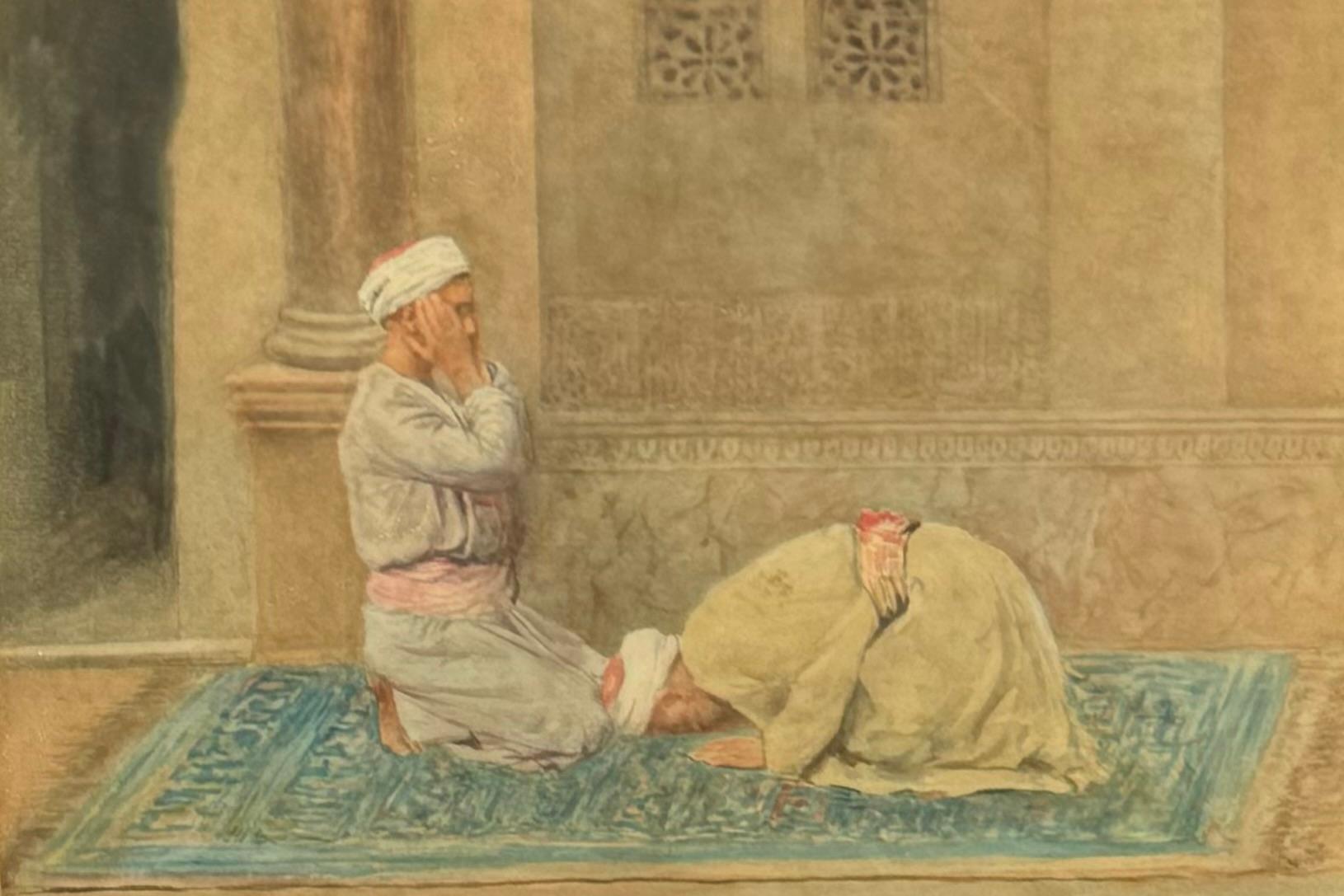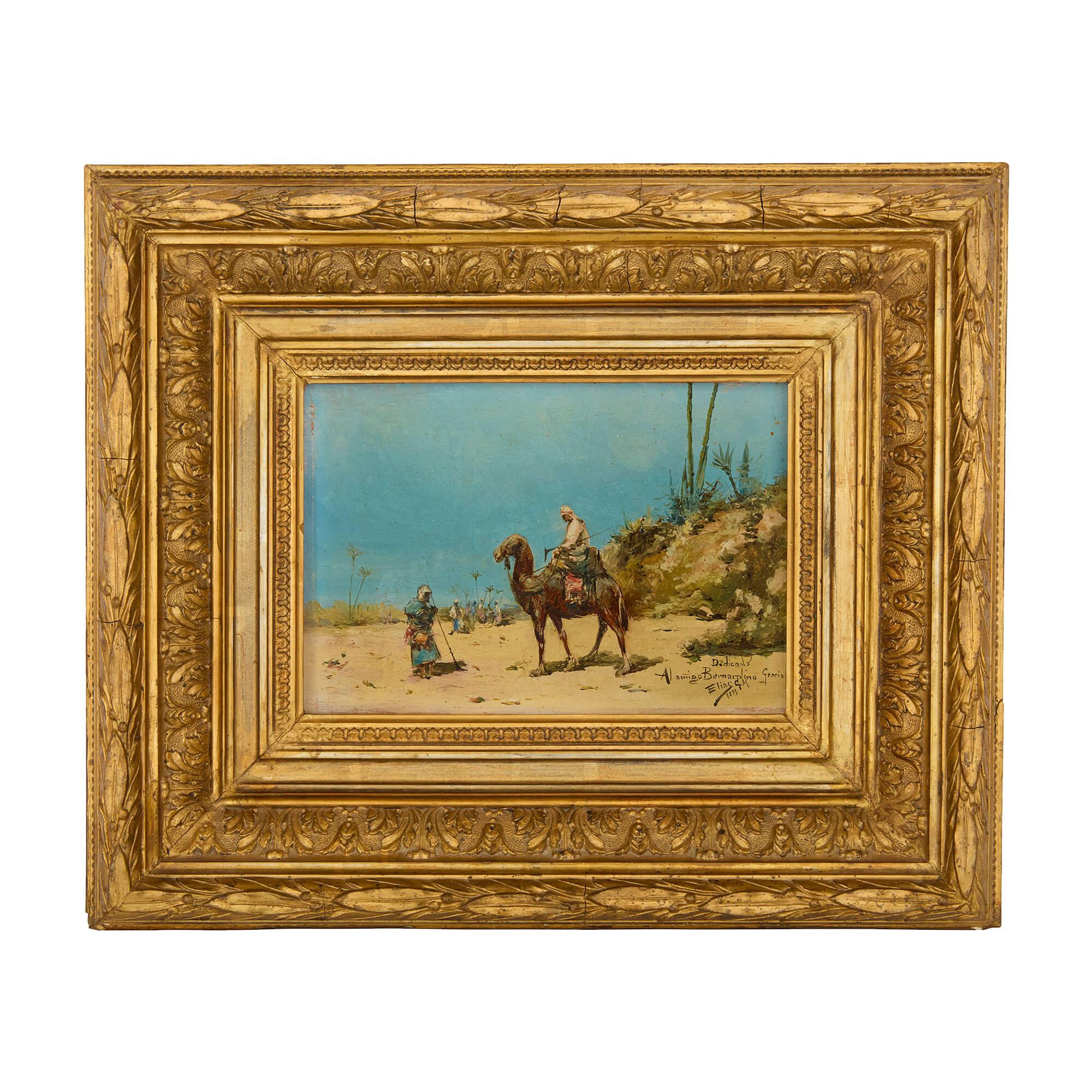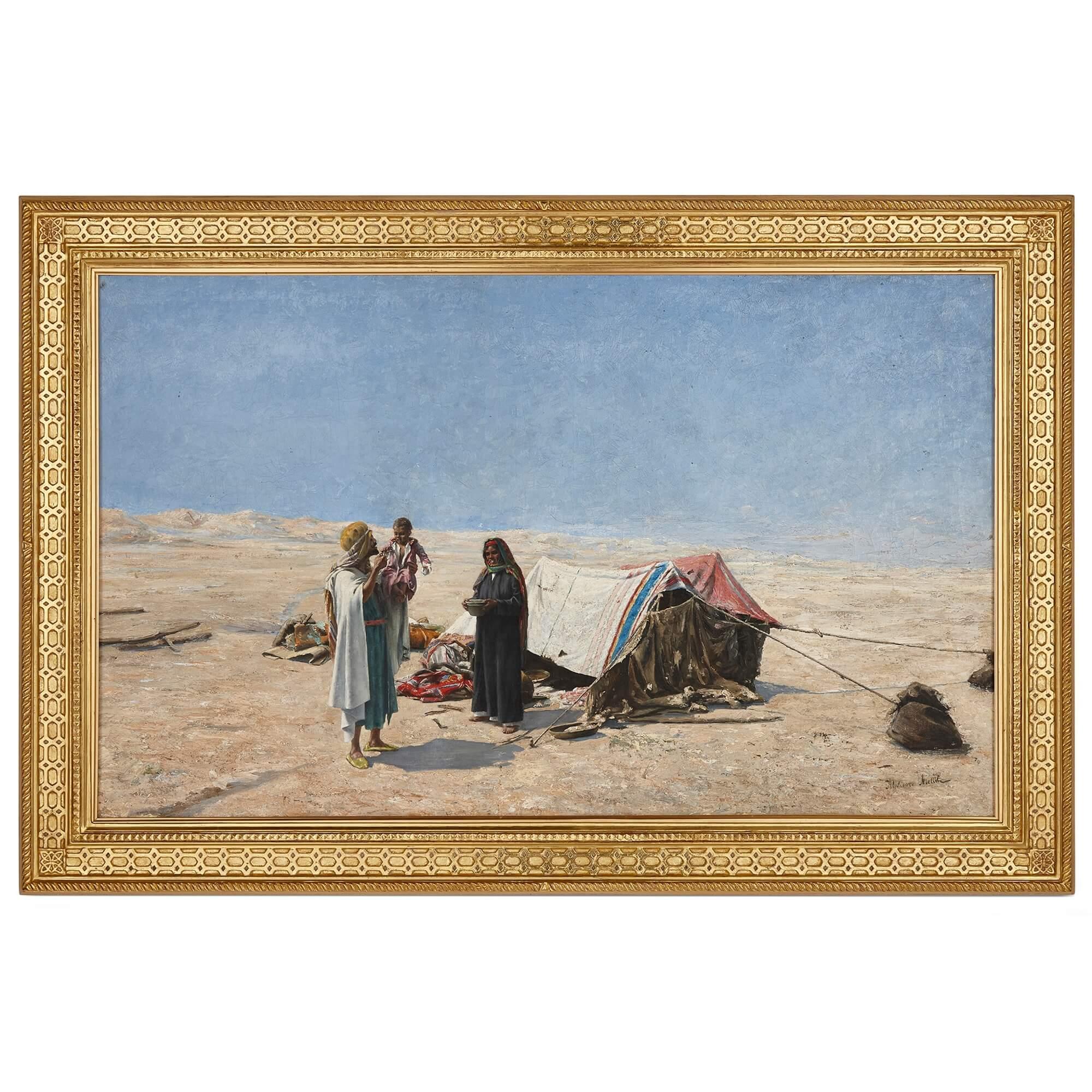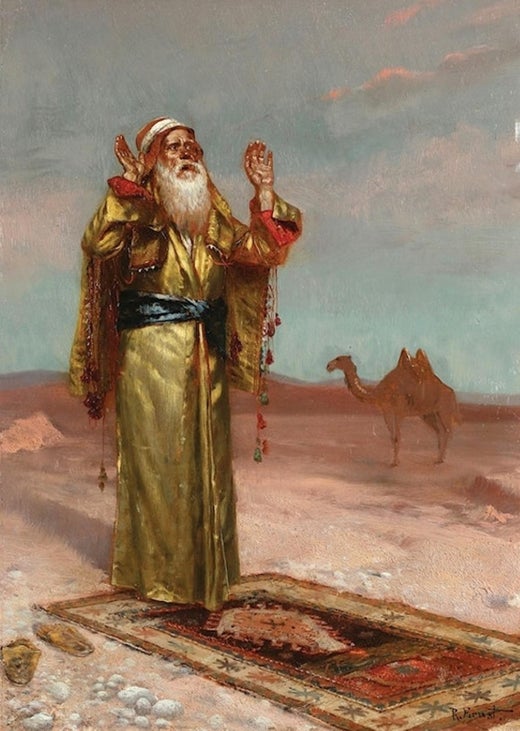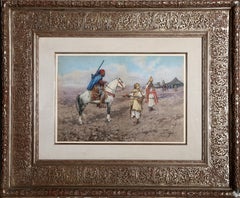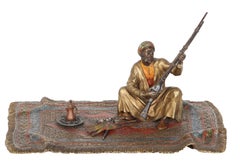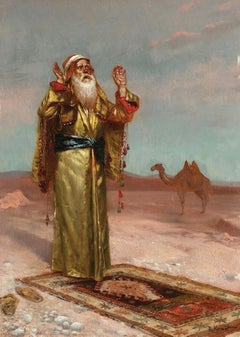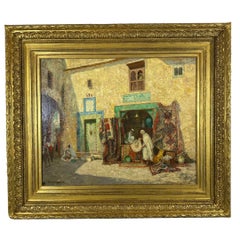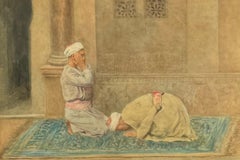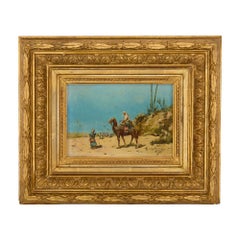Rudolf ErnstBedouin at Prayer, Orientalist Oil Painting on Panel by Rudolf Ernstcirca 1890
circa 1890
About the Item
- Creator:Rudolf Ernst (1854 - 1932, Austrian)
- Creation Year:circa 1890
- Dimensions:Height: 22 in (55.88 cm)Width: 27.75 in (70.49 cm)
- Medium:
- Movement & Style:
- Period:
- Condition:very good.
- Gallery Location:Long Island City, NY
- Reference Number:Seller: RO805011stDibs: LU46616235122
Rudolf Ernst
Rudolf Ernst had a lifelong fascination with Islamic and Moorish art, which informed his richly colored orientalist paintings. These demonstrate the Austrian artist’s extraordinary attention to detail and his mastery of texture and form.
Ernst was born in 1854 in Vienna. His father, Leopold Ernst, was a painter and architect. Encouraged by his father to pursue his interest in the arts, Ernst entered the Academy of Fine Arts at age 15. There, he studied academic art under Austrian painter and muralist August Eisenmenger and German classicist painter Anselm Feuerbach.
In 1874, Ernst left the Academy to study the Old Masters in Rome. After two years in Italy, he moved to Paris, where he met Turkish painter Osman Hamdi Bey, who inspired him to paint orientalist subjects.
In the following years, Ernst traveled extensively throughout Turkey, Morocco, Egypt and Moorish Spain, where he was enamored with Islamic art and culture. By 1885, his oeuvre consisted mainly of orientalist themes. Ernst’s favorite subjects included the harem — as shown in his figurative painting Spinning Yarn in the Harem (1886) — Hindu temples, Nubian guards and scenes of Islamic daily life, such as his watercolor portrait Man Smoking in Doorway.
In 1890, Ernst was introduced to the art of ceramic tile decorating while visiting Constantinople (today’s Istanbul). Back in Paris, he continued learning about ceramic art from ceramicist and glassmaker Léon Fargue. During his later years, Ernst constructed a ceramic studio where he made orientalist faience tiles. He also continued painting resplendent Eastern scenes from his Ottoman-style studio, often wearing a tarboosh hat while he worked.
Ernst participated in several notable exhibitions, including the Exposition Universelle held in Paris in 1889 and 1900. He won a bronze medal at the 1889 Exposition. He died in 1932.
Today, Ernst’s paintings can be found in the collections of the Fine Arts Museums of San Francisco and the Dahesh Museum of Art in New York City.
On 1stDibs, discover a range of Rudolf Ernst’s paintings.
- ShippingRetrieving quote...Shipping from: Long Island City, NY
- Return Policy
More From This Seller
View All1920s Impressionist Figurative Paintings
Canvas, Oil
1880s Academic Animal Drawings and Watercolors
Watercolor
Early 1900s Romantic Figurative Sculptures
Bronze
1960s Modern Portrait Paintings
Canvas, Oil
1970s Folk Art Figurative Paintings
Canvas, Oil
1950s Post-Impressionist Landscape Paintings
Gouache
You May Also Like
19th Century Academic Figurative Paintings
Panel, Oil
19th Century Realist Figurative Paintings
Oil, Canvas
1880s Academic Figurative Paintings
Watercolor
Late 19th Century Figurative Paintings
Oil, Panel
1870s English School Landscape Paintings
Oil
Early 20th Century Other Art Style Figurative Paintings
Canvas, Oil
Read More
Romare Bearden’s Humanity Infuses His Bright, Bold Art
Through collage, painting and printmaking, the artist foregrounded Black life in America in revolutionary new ways.
Chryssa’s 1962 Neon Sculpture Was Way ahead of the Art-World Curve
By working with lettering, neon and Pop imagery, Chryssa pioneered several postmodern themes at a time when most male artists detested commercial mediums.

